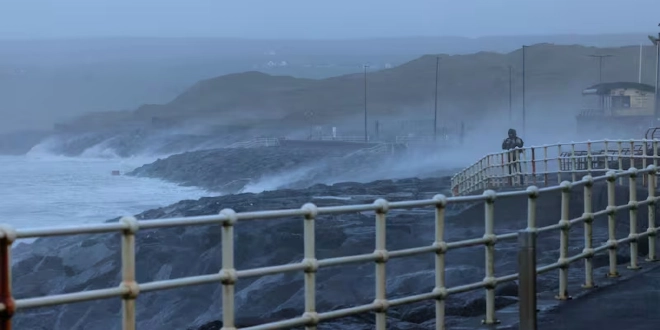Ireland came dangerously close to facing catastrophic flooding during Storm Éowyn, according to new findings by researchers at the University of Galway. The study reveals that had the storm struck just one week earlier, certain parts of the country could have experienced sea levels rising over five meters above normal — a scenario that could have caused devastating tidal flooding in coastal towns and cities.
Storm Éowyn hit Ireland on January 24, bringing record wind gusts of up to 184 km/h and causing widespread damage estimated at €200 million. Around 768,000 homes and businesses were left without power. The storm’s ferocity also saw ten-minute wind speeds reaching 142 km/h at Ceann Mhása in County Galway.
Surging Waters and a Lucky Tide
While the storm generated some of the highest storm surges ever recorded along Ireland’s western coastline, disaster was narrowly avoided due to the timing of the tide. The worst surges coincided with a low, ebbing tide, which helped prevent major inundation. According to the research team, had the same storm conditions occurred during a full or rising tide, the impact could have been catastrophic.
In Galway Port, for example, the storm surge peaked at 2.60 meters above the expected tide level. At Limerick Docks, it reached nearly 3 meters. If the storm had arrived during the high spring tide a week earlier, sea levels could have surged to 4.96 meters in Galway, 5.85 meters in Limerick, and 5.43 meters at Shannon Airport—levels that would have overwhelmed defenses and caused widespread flooding.
Future Risks from Climate Change
The research also underscores how vulnerable Ireland’s coastal infrastructure is to future climate-driven weather extremes. With 47 sea-level datasets analyzed, the study links the increasing flood threat to climate change, particularly the rise in mean sea levels and the likelihood of more intense rainfall events.
Dr. Indiana Olbert from the School of Engineering emphasized that human-induced climate change is accelerating these risks. She warned that continued global warming is likely to bring more frequent and severe weather events, which in turn will increase the danger of extreme floods in the coming years.
This research serves as a stark reminder of Ireland’s growing exposure to climate-related threats. While the country avoided a major disaster this time, the data highlights the urgent need for better planning, investment in resilient infrastructure, and more comprehensive climate adaptation strategies to protect communities from future storms. The near miss during Storm Éowyn might just be a preview of what lies ahead if action is not taken.
 The Daily Star Ireland
The Daily Star Ireland

